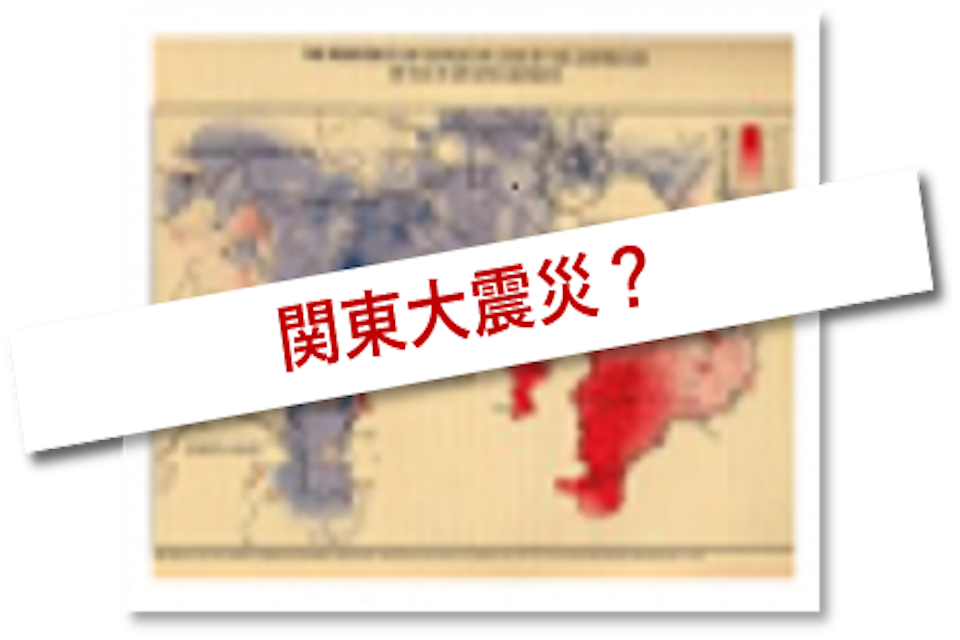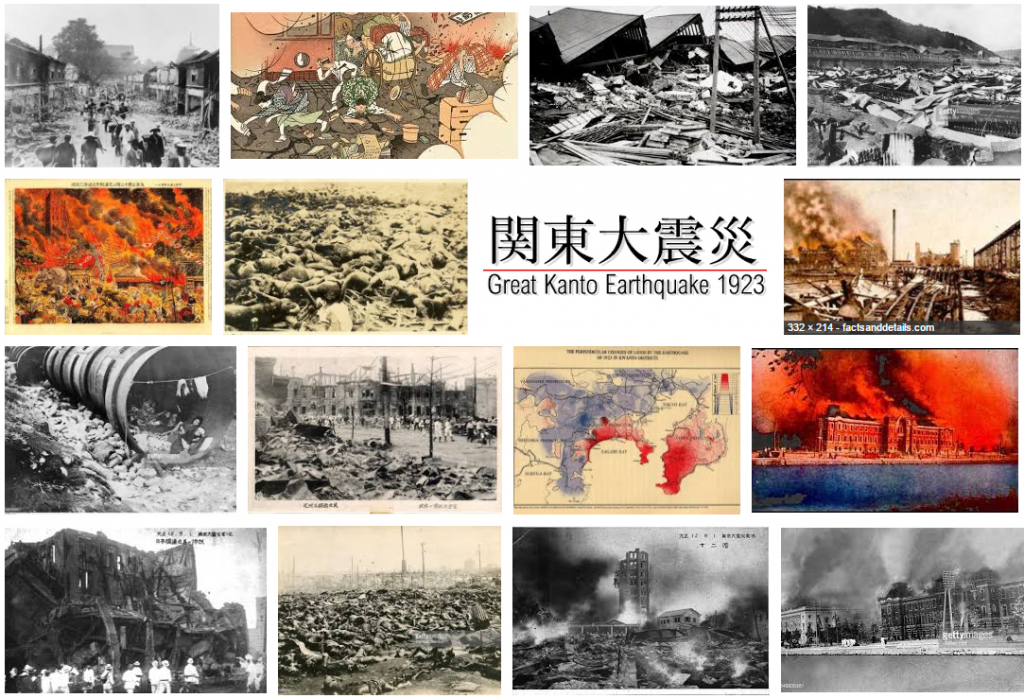03-6272-4372営業時間 9:00〜18:00
防災メディア

Seeing 1923 Kanto Earthquake with Today’s Eyes
2017/08/17

collage of 1923 photos from the Great Kanto Earthquake (source of pictures)
In 20th century Japan the three biggest natural disasters, measured by loss of life were in 1923 (Great Kanto Earthquake -at least 105,000 dead), in 1995 (Great Hanshin-Awaji Earthquake -between 5,502 and 6,434 dead), and in 1959 (Typhoon Vera -at least 4,400 dead). In the intervening years the status of disaster science and emergency management began to develop from a reactive posture to a proactive one that emphasized risk reduction and boosting a community’s resilience. Step by step the potential risks have been reduced (disaster risk reduction), although population growth, urban concentration of people, environmental damage, and climate change raise the risk for those alive today by comparison to earlier generations.
As a thought experiment, going back to Tokyo of September 1, 1923, it is worth asking what is different between the disaster response then and what a modern Emergency Operations Center (EOC) might do today, even without the benefit of their modern devices, software, and the infrastructure we take for granted now. The contrast of 1923 to 2017 shines a light on the improvements and, by extension, suggests the direction that future improvements could take a few generations from now.
In all places and times the storyline of a natural disaster has many universal elements and tasks to be completed. So the disasters of 1923, 1959, and 1995 (as well as 2011, the treble damage of the Great East Japan disaster) all put the first priority on preserving life, then stabilizing the damage from growing worse, then conserving property. Later there are the challenges of clean-up and finally there is the work to rebuild (restore as before) or to create anew (recover, “building back better”). While this sequence of steps is the same then and now, the tools and organizational structure and attitudes have advanced since 1923.
A simple sketch of the earthquake begins with the time and extent of the first quake. It was two minutes before noon on a workday and cooking fires had been lit at homes and restaurants. A typhoon near the Noto Peninsula on the Japan Sea coast was raising the wind speed around Tokyo, too. The release of the quake’s energy along the Sagami Trough lasted 4 to 10 minutes and recorded 7.9 magnitude with 57 aftershocks in total. The flames of cooking fires were spread by the wind and were nearly impossible to suppress among the many wood and paper structures. With water lines broken, it was not until 40 hours later that the threat was stopped and 43% of old Tokyo was gone. Ignorance, fear of unrest, rumors and prejudice led to physical abuse and killing of foreigners who seemed to be Korean. So police and army had finally to gather them and protect them.
Compared to now the world of 1923 had weaker physical infrastructure, less deeply developed social infrastructure and considerations for disaster response, and its information environment was much less rich than today. As a result of these shortcomings, the responses to the disaster needs were a series of case by case reactions instead of a planned set of strategies. Things like designated evacuation sites, drills, and coordinated emergency service, including an Emergency Operations Center were not there. The social resilience among residents to bounce back from the suddenly disabled social system was not as well understood as it is in today’s science of disasters and recovery. And the modern processes of rapidly collecting information, analyzing to come to a decision, then broadcasting the results were absent.
So while the facts of the earthquake and tsunami do not change and the disaster priorities and tasks are universal, the difference that a 2017 EOC team would bring to the 1923 events are (1) to form a clearer picture amid the confusion, (2) to communicate among EOC staff and with responders in the field at a higher rate of interchange, (3) stronger analytical questions and methods to sum up choices that need to be made, and finally the scale and the linked sets of actions directed by the 2017 EOC staff could possibly all together result in organizing the shelter, food and medical needs in a better way than the 1923 response staff did.
Just as an amateur chess player differs from a grand master faced with the same game board, so the developments in training, simulation, evaluation and refinement among emergency managers today has given them more depth of experience, a wider knowledge base of disaster sciences, and better ways to organize what they already know, what they still need to know, what they don’t know, and what they do not need to know. The same events of 1923 and the same technology of that time could be handled differently by 2017 EOC staff: their internal processes of continuous communication and coordinating what they know, documenting the unfolding process and events, debriefing at the end (After-Action Report) and knowing which pieces of information best contribute to a decision that needs to be taken.
All those functions within the modern EOC set it apart from 1923 and result in a clearer picture of events, options, and outcomes. Modern EOC staff by their training or habit are more proactive (to reduce or to mitigate risk), not be reactive to unfolding events. And modern emergency managers view the people in the disaster not as passive and helpless. Instead they are seen as partners with local knowledge about their neighbors, hazards, and usable resources to seek out. Local people are a source of resilience, not just an injured or vulnerable group awaiting rescue from outside teams.
In conclusion, the massive destruction of life, property, and livelihoods in September 1923 from the immediate events of fire, collapse and tsunami would not change with 2017 EOC staff in charge. But if somehow today’s experts could direct the 1923 response, then perhaps fewer people would die in the months following, thanks to modern organizational structure and processes to form clear context, picture, and decision paths. Maybe the same conclusion will be made about our time when our descendants 100 years from now look back at the disaster responses of the early 21st century and contrast their futuristic standards of organizational culture and information handling to what our capacities now are in 2017. The people of 1923 reacted with routines and tools they knew best, but the people of 2017 intend and practice being proactive with different routines and tools. This basic posture, pro-active instead of re-active, is a valuable change in the status quo of emergency planning for disaster management.
サイエンスクラフトとは...
サイエンスクラフトは防災計画の作成や防災訓練支援を数十年に渡って行っているコンサル会社です。お問い合わせはこちらまで。




